In the context of modern warfare increasingly dependent on technology, informationization and network operations, missile frigates are emerging as a mobile, flexible force with an indispensable role on the sea front; capable of undertaking multiple missions at the same time, from coastal defense to offshore operations. So what is a missile frigate? How is it different from destroyers and high-speed missile boats? What is the current status and development trend?
Origin of the name, difference from other modern warships
In navies of many countries, frigates often account for a large number due to their low construction cost, high mobility and strong firepower. Among them, missile frigates are a later generation.
Initially, frigates were powered by human power or sail, equipped with short-range cannons, and slow in speed. From the 16th to 17th centuries, armed three-masted sailing ships were called "frigates". In the 18th century, France and England developed frigates for escort and patrol. In the 19th century, torpedoes were invented to enhance the attack capabilities of this type of ship.
During World War II, German submarines became a major threat, prompting the rapid development of frigates. After the war, with advances in missile technology, many frigates began to be equipped with missiles, with high speed, long range, and developed in the direction of modernization and informationization.
Missiles gradually became the main weapon, creating the concept of "missile frigate". Since the 1970s, many ships have been equipped with helicopters, forming the basic weapon configuration today.
Although missiles are the main weapon, missile frigates are still equipped with a variety of weapons: guns, torpedoes, close-in defense systems, mines, depth charges, small boats... to help perform many missions such as anti-ship, anti-submarine, air defense, escort, reconnaissance, patrol and mine laying.
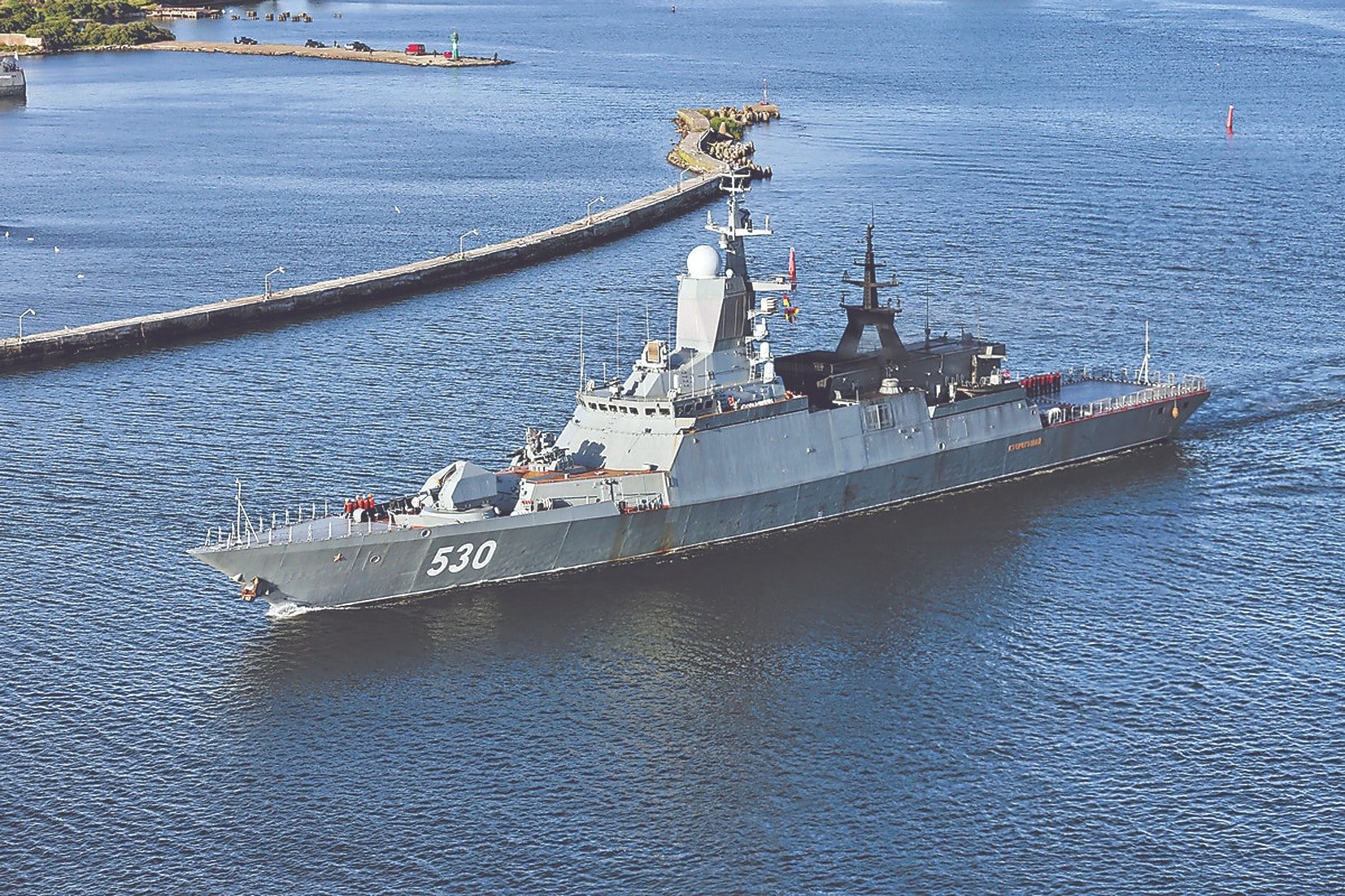 |
Russian missile frigate. Photo: 81.cn |
In modern navies, many types of ships can also carry and use missiles, such as missile destroyers or high-speed missile boats.
Frigates rely on their medium size and the advantages that come with that size. Compared to destroyers – which also have missile launchers, radar and sonar – destroyers are much larger, have a longer range, are more heavily armed and comprehensive, and often play an important role as command ships in fleet formations.
Because of that characteristic, destroyers are usually only deployed when really necessary. Meanwhile, missile frigates are more compact, more flexibly deployed, suitable for missions such as coastal defense, escort... Although their firepower is not as good as destroyers, the number of frigates is often more and the cost is lower, so they are more commonly used in many situations.
Compared with high-speed missile ships, missile frigates have longer ranges, can carry more missiles and are capable of long-term combat.
Therefore, missile frigates can be considered an intermediate type of ship between high-speed missile ships and destroyers, ensuring relatively comprehensive combat capabilities while also being suitable for mission requirements in many combat situations that the above two types of ships can hardly meet effectively.
Outstanding features of the new generation missile frigate
New generation missile frigates often have common features such as using diesel engines, stealth design and equipped with modern sensors. However, the specific design depends on the needs and capabilities of each country.
Ships can be classified according to many criteria: by displacement (light, medium, heavy) or by mission (anti-ship, anti-submarine, air defense, multi-purpose). However, displacement standards are not consistent between countries; usually, ships from 3,000-6,000 tons are considered medium-class. Different tonnage also entails differences in firepower, defense, and manufacturing costs.
Large missile frigates are often equipped with modern weapons systems. For example, the Russian Project 20385 (Gremyashchy class) is a light frigate with a displacement of 2,000 tons, equipped with two anti-ship missile launchers, 12 anti-aircraft missile launchers and many other weapons. Meanwhile, the Project 22350 is a medium-sized ship with a displacement of 5,400 tons, 32 anti-aircraft missile launchers and 16 anti-ship missile launchers. This is the main warship of the Russian Navy, specializing in missions in distant waters.
The classification of missile frigates according to their combat focus does not mean that their functions are single. To adapt to many environments and missions, these ships are often designed to be multi-purpose. For example, Türkiye's TF-100 class frigate (Istanbul ship) is fully equipped with guns, anti-aircraft missiles, anti-ship missiles, torpedoes, remote-controlled weapon stations and helicopters, meeting many combat missions. The development or import of missile frigates depends on the individual needs of each country, leading to diversity in types and features.
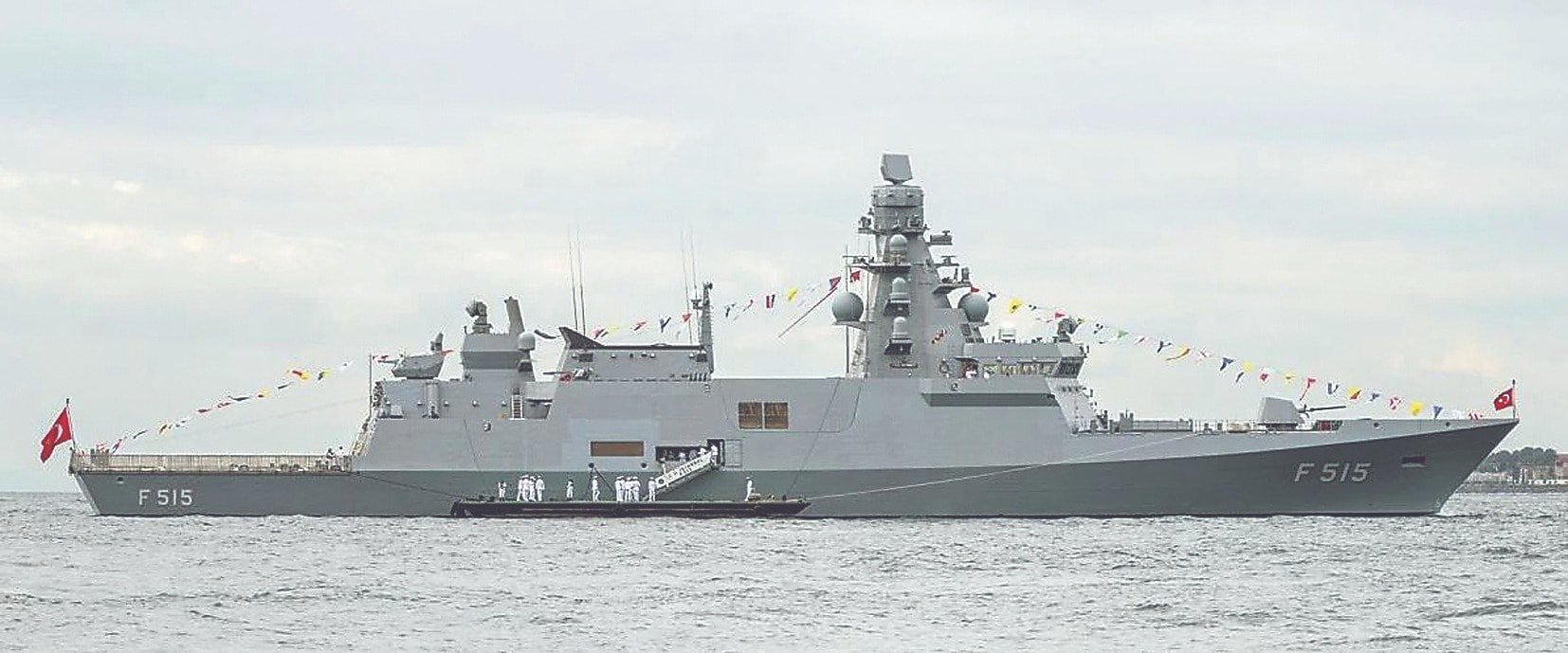 |
| Turkey's TF-100 missile frigate. Photo: 81.cn |
Missile frigates have a wide range of displacement, from several hundred to tens of thousands of tons, leading to differences in operating range. For example, the German F-125 class has a displacement of 7,100 tons, with a range of over 7,000 km, while the Iranian Soleimani class is only about 600 tons, suitable for near-shore operations.
Modern frigates are equipped with a variety of anti-ship, anti-submarine and anti-aircraft missiles with increasingly improved performance. The launching system is also optimized, of which the most popular is the vertical launch system (VLS). For example, the US Constellation-class ship has 4 MK-41 clusters (32 tubes), used to launch many types of anti-aircraft and anti-submarine missiles, and 4 clusters of NSM anti-ship missiles with a range of 300 km.
Stealth design is increasingly emphasized to reduce the possibility of detection and counterattack. Countries optimize the shape of the hull, use radar-absorbing materials, and improve the engine to reduce noise. For example, Russia's Project 20380 ship has a compact design, reducing radar reflection; Iran's Soleimani-class ship has a low hull, a sloping upper structure and a cover to increase stealth.
Modern missile frigates are designed to operate both independently and in support of the fleet. Thanks to the increasing level of informationization, networkedness and intelligence, they can be effectively integrated into the general combat system. Many ships are already capable of collecting, transmitting and processing information accurately and quickly. For example, in 2021, the Russian class 22350 ship “Admiral Gorshkov” directed targets to Bastion coastal missiles during an exercise in the Arctic.
In addition, defense capabilities, especially electronic warfare, are also enhanced to effectively deal with threats and ensure mission completion.
Missile frigates in modern warfare: Role and development trends
Modern warfare is increasingly informationized, fast-paced and fierce, in which missile frigates play an important role. With increasingly diverse missions - from coastal defense, anti-submarine, air defense to long-range combat - ships need a longer operating range, stronger and more accurate firepower, and therefore a more superior weapon structure.
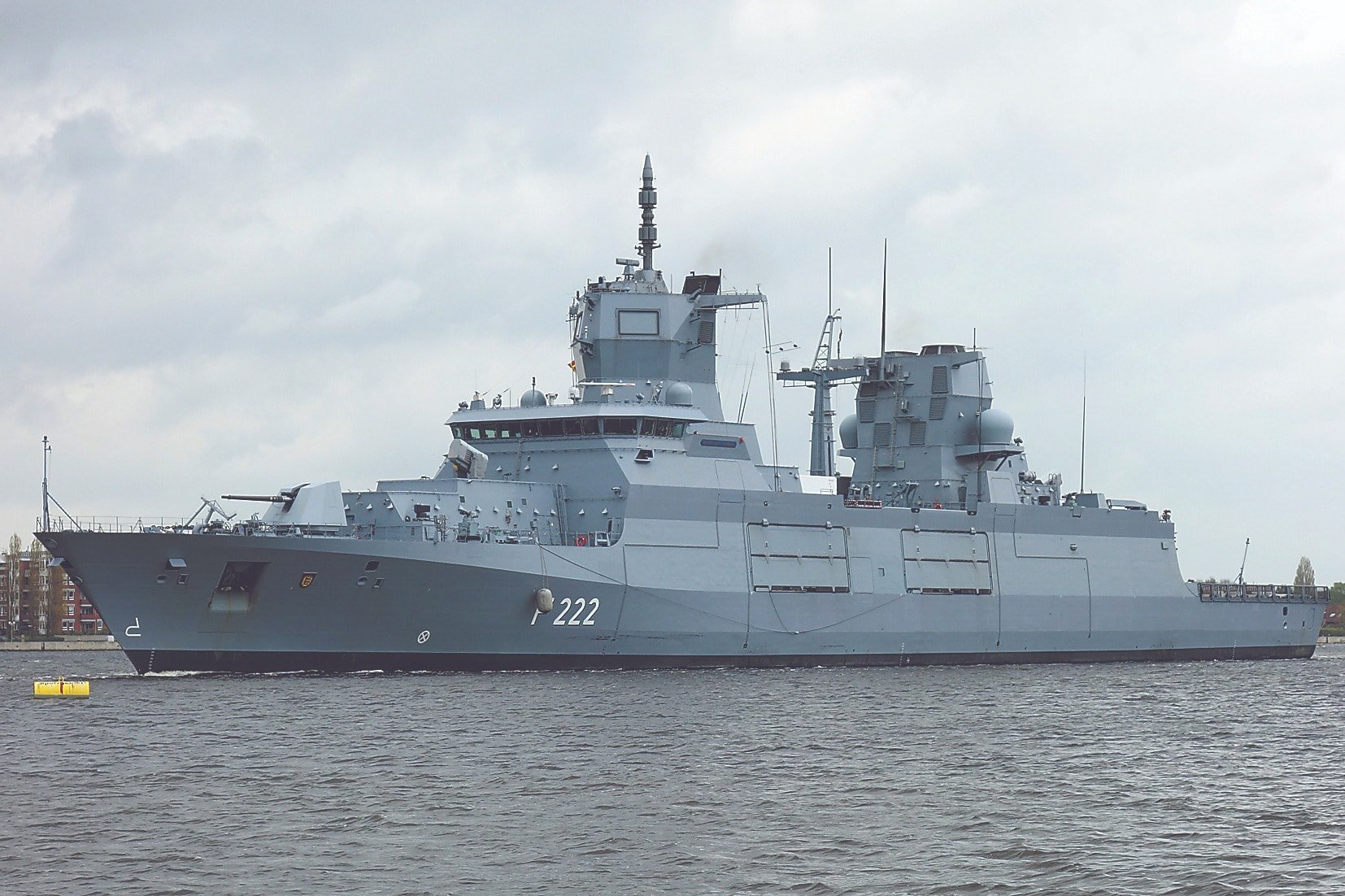 |
| German missile frigate. Photo: 81.cn |
For example, in 2020, Russia tested the 3M-22 Zircon hypersonic missile on a Gorshkov-class ship; the US Navy is researching equipping Constellation-class ships with 150 kW laser cannons to enhance air defense and anti-small-target capabilities at sea.
Missile frigates are increasingly playing a key role in modern combat networks, with the ability to share information and coordinate effectively. In the future, maritime warfare will depend heavily on networked systems. For example, Russia's Project 22350 frigates are equipped with the SIGMA-22350 command system, which allows for integration and sharing of data with ships and command centers, improving overall combat effectiveness.
The trend of intelligence and unmanned, high level of confrontation in future war requires extremely fast response ability. It is predicted that missile frigates will be integrated with the ability to automatically collect, analyze and react to the battlefield situation; shorten the action chain of "detect - react - attack". Integrating unmanned systems (UAV, unmanned submarines) to expand combat capabilities while minimizing human risks. In addition, modular design will also be a development direction to help missile frigates flexibly change roles depending on actual missions, reducing costs of new construction, operation and maintenance in the long term.
THANH SON (synthesis)
* Please visit the International section to see related news and articles.
Source: https://baolamdong.vn/tau-ho-ve-ten-lua-the-he-moi-vai-tro-dac-diem-va-xu-huong-phat-trien-384632.html


![[Photo] Editor-in-Chief of Nhan Dan Newspaper Le Quoc Minh received the working delegation of Pasaxon Newspaper](https://vphoto.vietnam.vn/thumb/1200x675/vietnam/resource/IMAGE/2025/9/23/da79369d8d2849318c3fe8e792f4ce16)


![[Photo] Prime Minister Pham Minh Chinh chairs the 14th meeting of the Steering Committee on IUU](https://vphoto.vietnam.vn/thumb/1200x675/vietnam/resource/IMAGE/2025/9/23/a5244e94b6dd49b3b52bbb92201c6986)




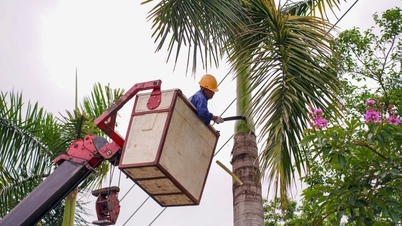





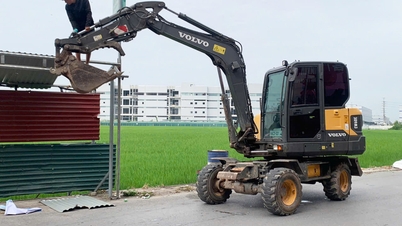











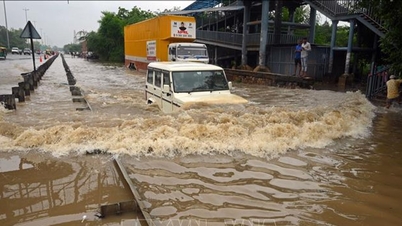
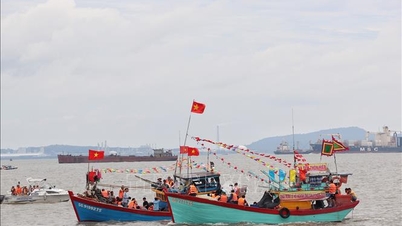


































![[Photo] Solemn opening of the 1st Congress of Party Delegates of Central Party Agencies](https://vphoto.vietnam.vn/thumb/402x226/vietnam/resource/IMAGE/2025/9/24/82a89e250d4d43cbb6fcb312f21c5dd4)
































Comment (0)